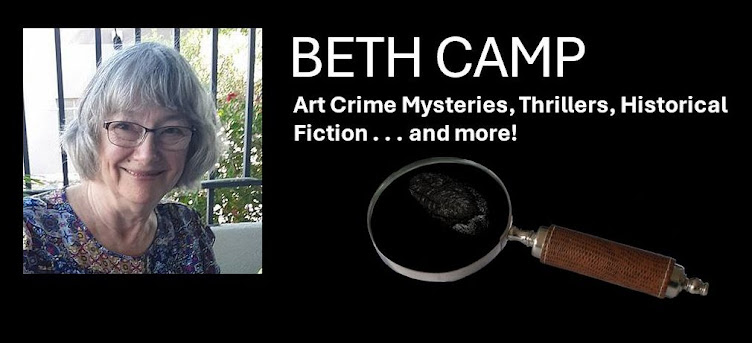I've been intrigued by this process and am just now working on that winter crossing of the Rocky Mountains. Surprisingly, as I'm writing about Cat's journey from York Factory in Upper Manitoba to Fort Vancouver along the Columbia in Washington State, the story happens to be set just about now, early November.
In the section I'm working on, it's 1846, and Cat, disguised as a young, male clerk, travels with a fur brigade over the Athabasca Pass to Boat Encampment.
Once they've successfully reached Boat Encampment, that place where the Wood River meets the Columbia, they must have felt a tremendous sense of relief, as they were greeted by the men from Fort Vancouver, hot fires, and finally enough food to eat.
 |
Paul Kane painted a quick sketch of the campgrounds at Boat Encampment on September 22, 1847:
'Boat Encampment' by Canadian artist Paul Kane. Painted while travelling with a HBCo fur brigade - Sept 22, 1847, Kane with canoe brigade up the Columbia River and arrived on October 10 at Boat Encampment. [near Rockies on Alberta/BC border] They waited until horse trek from Jasper arrived. Then they switched, the horse team taking over the canoes. They managed to bring all 56 horses safely and without loss to Jasper's House [Alberta]. Pinterest by RobinBodnaruk.
But a nasty, nearly 1,200 mile journey down the Columbia River awaits them, past the long series of rapids at what is now The Dalles and the notorious Big Eddy, a massive whirlpool that claimed many lives in that time when the river was the primary (and most efficient) mode of transport. Perhaps the brigade was inured to further challenges.
But I still remember skirting a massive whirlpool when white water river-rafting on the Snake and Salmon Rivers. Our boat, just a little larger than a canoe, came within a few feet of the whirlpool, close enough for me to stare into the deep green swirling center. Our guide said if we got caught in the whirlpool, our bodies would not come up until spring.
I do cherish that experience on these two rivers, for I learned to read the river -- which sections required portage and which V-shaped waves predicted safe journey ahead.
Yesterday, it snowed here in Spokane, just a light sprinkling to remind us that winter closes in. But in the mountains north of here, the real snow begins. I'm happy to bring Cat down out of the mountains and closer to her journey's end.
But a nasty, nearly 1,200 mile journey down the Columbia River awaits them, past the long series of rapids at what is now The Dalles and the notorious Big Eddy, a massive whirlpool that claimed many lives in that time when the river was the primary (and most efficient) mode of transport. Perhaps the brigade was inured to further challenges.
But I still remember skirting a massive whirlpool when white water river-rafting on the Snake and Salmon Rivers. Our boat, just a little larger than a canoe, came within a few feet of the whirlpool, close enough for me to stare into the deep green swirling center. Our guide said if we got caught in the whirlpool, our bodies would not come up until spring.
I do cherish that experience on these two rivers, for I learned to read the river -- which sections required portage and which V-shaped waves predicted safe journey ahead.
Yesterday, it snowed here in Spokane, just a light sprinkling to remind us that winter closes in. But in the mountains north of here, the real snow begins. I'm happy to bring Cat down out of the mountains and closer to her journey's end.


No comments:
Post a Comment